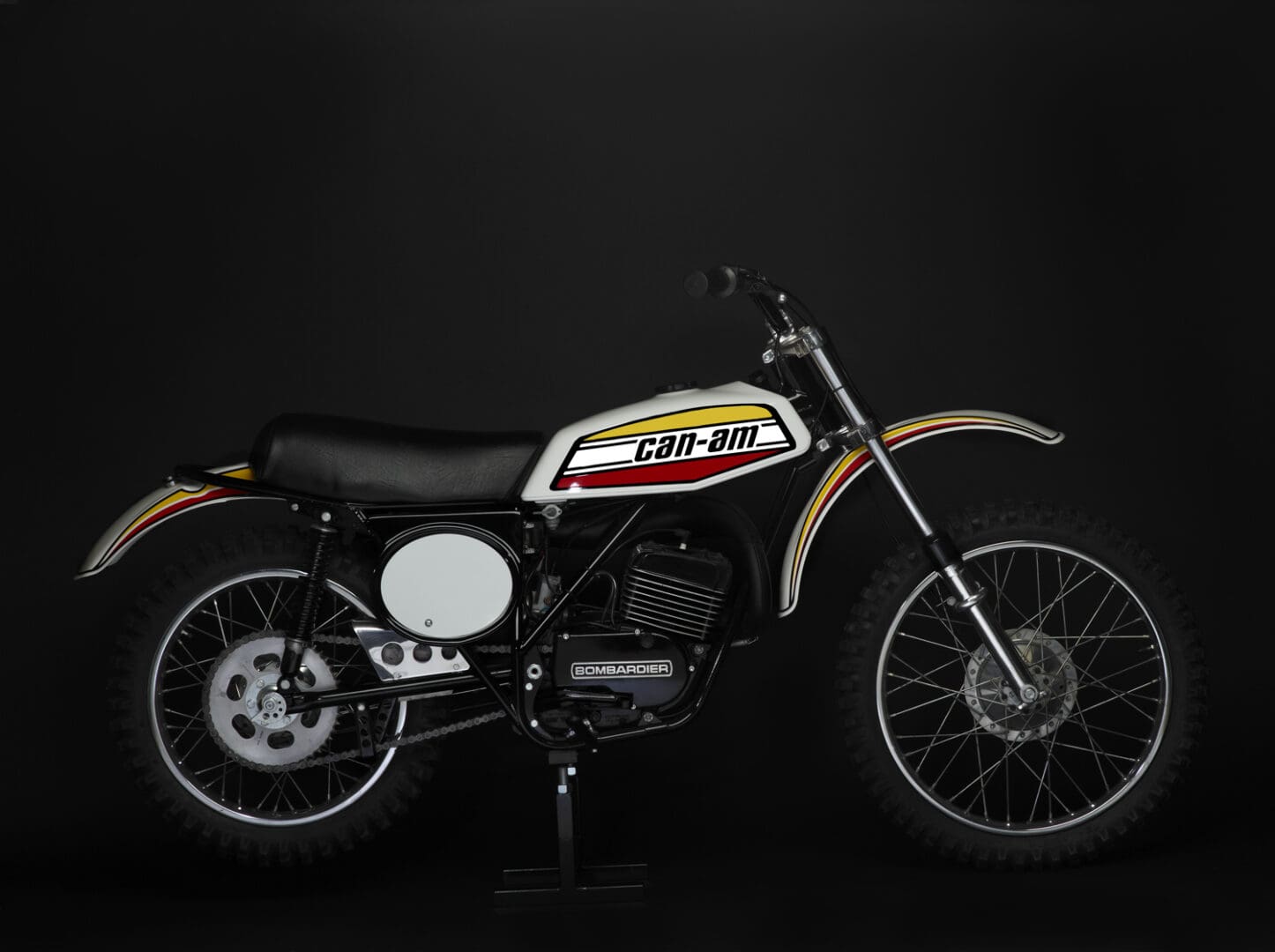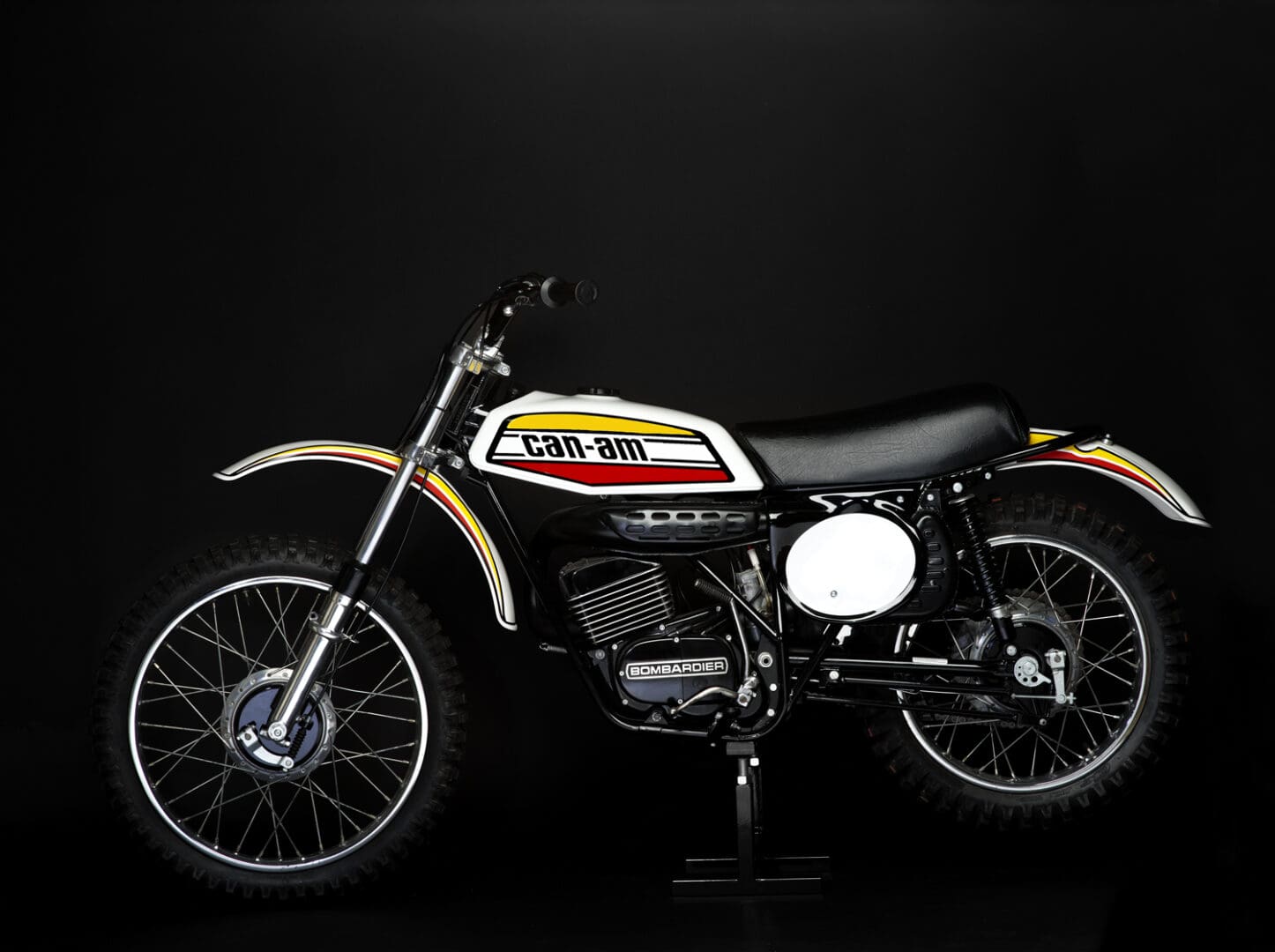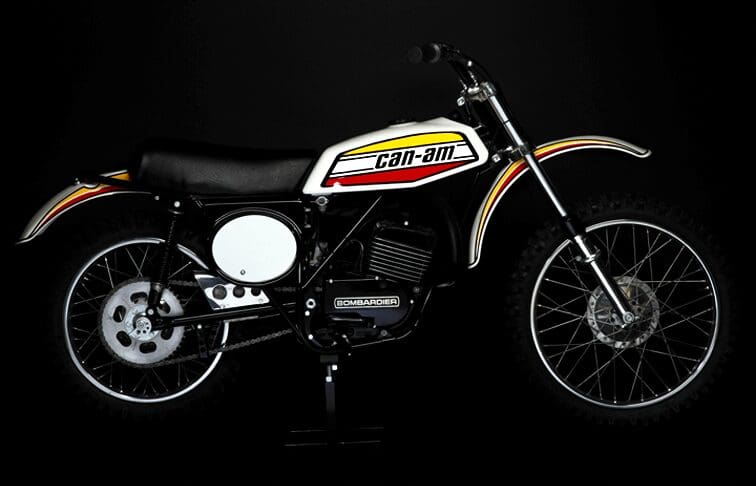1974 Can-am 125 MX-1
Model Information
While numerous motorcycle manufacturers (Yamaha, Kawasaki, etc.) determined that snowmobiles could supplement their motorcycle sales, Bombardier (of Quebec, Canada), known for its Ski-Doo snowmobiles, decided to develop their Can-am line of motorcycles as an adjunct for their snowmobiles. As the world's largest manufacturer of snowmobiles, they already had a well-established dealership network; unfortunately, they were in the Snow Belt. How cool (not to mention impressive) would it be today if an entirely new brand entered the market and was immediately competitive?
To help assure a successful entrance into the world of production motocross bikes, Bombardier imported former World Champion Jeff Smith to Canada and reportedly invested in nearly four years of development. The 125 MX-1 and 175 MX-1 were the first models (followed by the 250 MX-1), distinguishable only by the stickers on the tank. The enduro versions were identical with the exception of the added lighting.
Possibly Smith's influence encouraged Bombardier to incorporate some of the best componentry for the bikes, including; Bing carbs, Mikuni oil pump, Bosch CDI ignitions, Trelleborg tires, Betor forks, and Girling shocks.
The Can-Ams were recognized for their quality of craftsmanship and for some of their innovations, one of which was an adjustable steering head. The entire steering head can be rotated, allowing you to adjust the rake from 25-31 degrees. To compensate, the rear suspension has four (4) different upper mount locations. The pipe was also extremely unique, most notably the triangular silencer/spark arrestor which is hidden behind the side panel. Although the entire system was estimated to weigh around 15 lbs, it was reported that every attempt at an aftermarket pipe resulted in a 2-3 horsepower loss! The cool-looking heat shield, as Dirt Rider said, "protects the hand embroidery on your Full Bores." The white plastic tank was definitely ahead of its time, but for some reason, Can-am decided not to incorporate a breathing tube into the gas cap, and as a consequence, they were reported to have leaking issues.
Can-am engines were built by the Rotax division of Bombardier in Austria. Rotax, no strangers to two-stroke engines, was purchased by Bombardier in 1970. One of the most raved-about aspects of the MX-1 was the 6-speed, 20hp rotary valve engine, which incorporates a unique external carb design. The rotary valve provides a much shorter distance to the crank than a port in the rear of the cylinder. And why does the MX-1 need an oil pump? Because it needs to pump oil (2.5 quarts) from the frame down tube (where you fill it) to the crank and the rotary valve, there is no pre-mix; it's oil injected.
Although praised for its stability, good brakes, and excellent motor, its drawback was its 220lb weight, largely attributed to its pipe, air box design, and steel rims. Nonetheless, as Dirt Rider stated, "The Can-am is right there with the Suzuki and trying to be on the heels of the Elsinore. The Bombardier Can-am is a very impressive first effort…".
Can-am also released a very limited number of "factory replica" GP125 models, which were claimed to be identical to the developmental bike raced by Jeff Smith. The GP version was priced at $1250, significantly higher than the $945 MX-1. The most notable differences on the GP were the downpipe, special "Jones style" handlebars, and a front fender mud flap. If I had to guess, I would say the motor and suspension received the majority of modifications, and possibly they added aluminum rims. I wish I knew; in fact, I wish I had one of these bikes in my collection. But I've never seen one of these bikes and don't know of anyone who has.
Can-am was serious about promoting their new motocross line. They hired Gary Jones away from Honda to contest the not yet developed 250 MX-1. Gary Jones had won the 1973 250 National Championship on the new Honda CR250 Elsinore, then won again in 1974 on the new Can-am. Can-am also hired Gary's brother and father, Dewayne Jones and Don Jones (for development), and later Jimmy Ellis and Marty Tripes.
To my knowledge, Can-am introduced a slightly improved MX-2 in 1975 (a downpipe was the most obvious difference) and then discontinued the 125 MX model in 1976. There wasn't another Can-am 125 motocrosser until the MX-6 models were introduced.
1974 Can-am 125 MX-1
One day I came across a beautifully restored 1975 Can-am 125 MX-2 for sale and, as luck would have it, only a couple of hours from my house. I had been patiently waiting to find the first-year MX-1 model, but I contacted the seller anyway to ask him a few questions. He had a special interest in Can-am's because, as a kid, he had fond memories of his father riding them. Consequently, he had completed numerous early-year Can-am restorations and happened to mention that he was a couple of months away from finishing a 1974 125 MX-1. Perfect! I purchased this bike in December 2004.
He's a great guy, and his work and attention to detail are so impressive that I've since asked him to help manage the restorations on a couple of other bikes in my collection.



